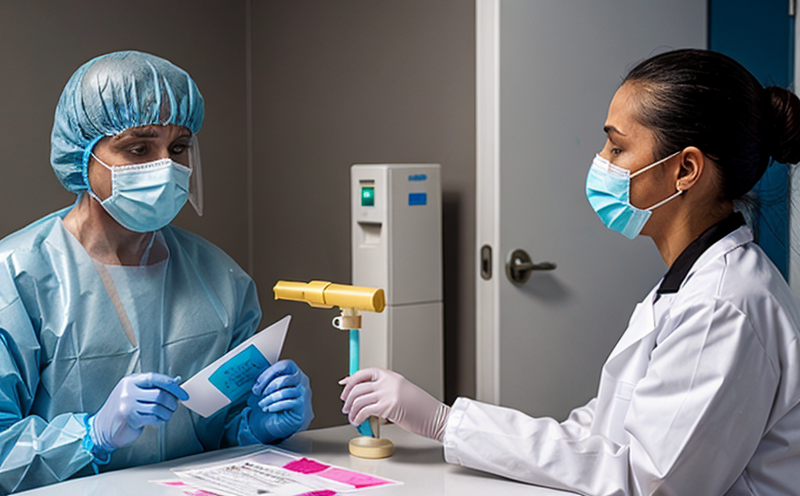Lyme Disease (Borrelia burgdorferi) Testing in Ticks
Infectious diseases like Lyme disease are a growing concern in healthcare and public health sectors worldwide. Borrelia burgdorferi is the bacterium responsible for causing Lyme disease, which is transmitted to humans through the bite of infected ticks. Accurate diagnosis of Borrelia burgdorferi infection requires precise testing methods that can detect antibodies or direct evidence of the bacteria in the tick.
The testing process begins with proper specimen collection and handling. Ticks are typically collected using fine-tipped tweezers, avoiding contact between your skin and the mouthparts of the tick. Once removed, ticks should be placed in a clean container with alcohol for preservation before they can undergo testing. Specimen preparation involves either extracting DNA from the tick or culturing it to isolate Borrelia burgdorferi. Molecular techniques such as polymerase chain reaction (PCR) are used to detect specific genetic sequences of the bacteria.
Diagnostic methods for detecting Borrelia burgdorferi in ticks include serological tests like enzyme-linked immunosorbent assay (ELISA), indirect fluorescent antibody test (IFAT), and Western blot. ELISA is often the initial screening method due to its high sensitivity, but it can generate false-positive results. IFAT offers better specificity compared to ELISA; however, it requires expertise in interpreting the results. Western blot provides a definitive diagnosis by detecting specific antigens associated with Borrelia burgdorferi.
Infectious disease testing for ticks is crucial not only for individual health but also for public health strategies aimed at preventing further spread of Lyme disease. Public awareness campaigns and routine tick removal practices are supported by accurate diagnostic testing, ensuring that individuals can seek appropriate treatment promptly if infected.
- Industry Applications: Testing in ticks is vital for public health agencies to monitor the prevalence of Borrelia burgdorferi in tick populations. This data informs vaccination programs and educational campaigns aimed at reducing tick bites and infections.
The primary goal of Lyme disease testing in ticks is early diagnosis, which enhances treatment outcomes and reduces long-term complications associated with untreated infections. Public health initiatives rely on these tests to identify regions where the risk of infection is high, allowing for targeted interventions such as enhanced vector control measures or community awareness programs.
Scope and Methodology
The scope of Lyme disease testing in ticks includes a comprehensive approach from specimen collection through final analysis. Specimens are typically collected by healthcare professionals using sterile techniques to ensure accuracy and reliability of the test results. After removal, ticks are placed in containers with alcohol for preservation.
Once specimens arrive at our laboratory, they undergo rigorous quality control checks before being processed for testing. Laboratory personnel employ a variety of methods depending on the specific requirements of the test:
- Molecular Techniques: PCR-based assays are used to amplify and detect the genetic material of Borrelia burgdorferi within the tick.
- Serological Tests: ELISA, IFAT, and Western blot are employed for detecting antibodies or direct evidence of the bacteria. These tests help differentiate between current infections and past exposures to the bacterium.
The methodology ensures consistency with international standards such as those defined by ISO, ASTM, EN, and IEC. This helps ensure that our testing results are reliable and can be compared across different laboratories and regions globally.
Upon completion of all tests, detailed reports are generated, providing clear insights into the presence or absence of Borrelia burgdorferi in the tick samples submitted for analysis. These reports include information on the type of specimen received, any abnormalities noted during processing, and a summary of test results along with their interpretations.
Industry Applications
- Public Health Surveillance: Testing ticks helps monitor the prevalence of Borrelia burgdorferi in various geographic locations. This information supports public health programs aimed at reducing tick populations and educating the public about Lyme disease risk.
- Veterinary Medicine: Diagnostic tests on ticks can also be used to protect pets from Lyme disease, ensuring that both humans and animals are protected against this infectious agent.
- Epidemiological Studies: Large-scale testing of tick populations aids in understanding the spread patterns of Lyme disease and identifying high-risk areas for further research and intervention.
In addition to these applications, tick testing is essential for evaluating the effectiveness of tick control measures implemented by local governments. By regularly monitoring tick populations, public health officials can adjust strategies based on real-time data, ensuring that resources are allocated efficiently to combat Lyme disease.
Eurolab Advantages
At Eurolab, we pride ourselves on offering comprehensive services tailored specifically for the clinical and healthcare sectors. Our expertise in infectious disease testing extends beyond just laboratory analysis; it encompasses cutting-edge technology, stringent quality assurance processes, and a commitment to providing accurate results.
We employ state-of-the-art equipment and highly trained professionals who adhere strictly to international standards such as ISO 15189 for medical laboratories. This ensures that every test conducted meets the highest quality expectations set forth by global healthcare organizations.
Our comprehensive approach includes not only performing the necessary tests but also offering expert advice on interpreting results, suggesting appropriate follow-up actions based on findings, and providing education materials to help clients understand the importance of timely diagnosis and treatment.
At Eurolab, we take pride in our ability to deliver reliable Lyme disease testing services. With a focus on precision and reliability, our goal is to contribute positively towards improving public health outcomes related to tick-borne diseases like Lyme disease.





